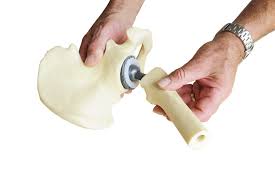Hip replacement is a surgical procedure in which the hip joint is replaced by a prosthetic implant. Hip replacement surgery can be performed as a total replacement or a hemi replacement. Such joint replacement orthopaedic surgery is generally conducted to relieve arthritis pain or in some hip fractures. The hip joint is one of the largest joints in the human body which is known as a “ball and socket joint”.
Some common reasons why a hip joint can become damaged include:
- Osteoarthritis – which is called “wear and tear arthritis”, where the cartilage inside a hip joint becomes worn away, leading to the bones rubbing against each other
- Rheumatoid Arthritis – which is caused by the immune system (the body’s defence against infection) mistakenly attacking the lining of the joint, resulting in pain and stiffness
- Hip Fracture – if a hip joint becomes severely damaged during a fall or similar accident it may be necessary to replace it
Many of the conditions treated with a hip replacement are age-related so hip replacements are usually carried out in older adults aged between 60 and 80 years.
Risks and complications in hip replacement are similar to those associated with all joint replacements and they include dislocation, impingement, loosening, osteolysis, infection, metal sensitivity, nerve palsy, pain and death.
Modern process for hip replacement include stainless steel one-piece femoral stem and head, polyethylene (originally Teflon), acetabular component, both of which were fixed to the bone using, PMMA (acrylic) bone cement.
Hip replacement surgery is a safe and effective procedure that can relieve your pain, increase motion, and help you get back to enjoying normal, everyday activities, improve your quality of life.
Minimally invasive and small incision total hip replacement surgery is an evolving area and more research is needed on the long-term function and durability of the implants.

